What is valerian and what kind of effect does it have on cats? What are the different ways in which valerian can be used? What’s the difference between valerian and catnip?
Is there anything better than going shopping for your favourite feline? While you’re getting the essential things like cat food and cat litter, you’ll probably encounter a whole bunch of non-essential items that look super fun for your furry friend. Just add them to your shopping basket! For example, you’ll likely have noticed a huge selection of cat toys with cat-safe herbs. These might be cushions or stuffed animals or even dried sticks designed to encourage cats to brush their teeth. The most popular herbal toppings for cat toys are catnip, silver vine and valerian.
What makes valerian so attractive to cats? Why do some cats love the herb while others can’t stand it? What is the proper dosage when it comes to valerian? And is it in any way addictive?
What is valerian?
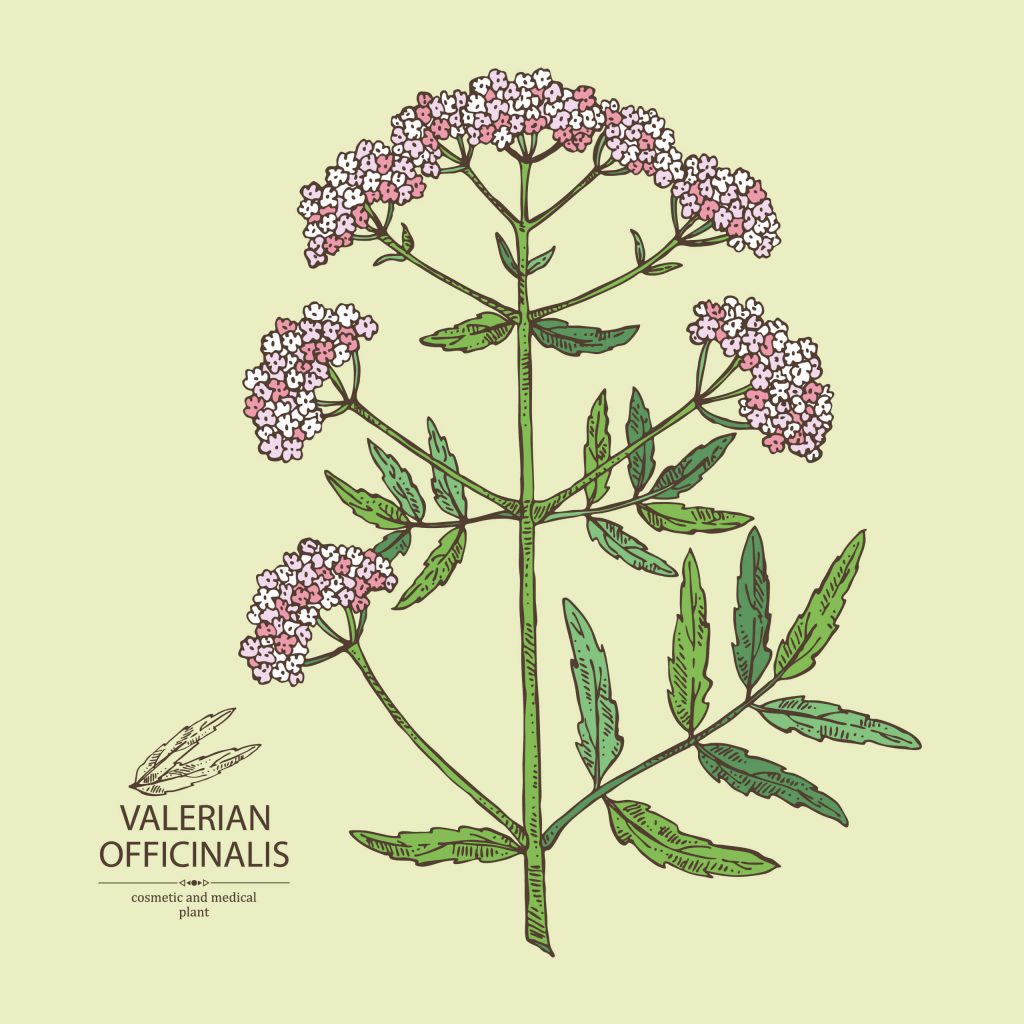
Valerian (Valeriana officinalis) is also known as garden valerian, garden heliotrope, setwall, all-heal and cat’s love. It’s a species of plant from the genus valerian and belongs to the large honeysuckle (Caprifoliaceae) family. Valerian has been in use for centuries. In the Middle Ages, for example, valerian was used as an aphrodisiac and medicinal herb. Not only was
it used to cure ailments, however, but also to keep evil spirits away from house and home. Thanks to its calming properties, valerian root is still valued today as a sedative: whether in the form of tablets, tinctures or teas, valerian can help you relax in the event of anxiety, stress and insomnia:
- dragée tablets
- film-coated tablets
- tinctures
- capsules
- powders
- juices
- drops
- bath products
- tea blends

DID YOU KNOW:
that you can also use valerian as a spice in your meals and as an herb for cooking? You can flavour dishes with ground valerian root or use the plant leaves in a salad.
What behaviour does valerian trigger in cats?
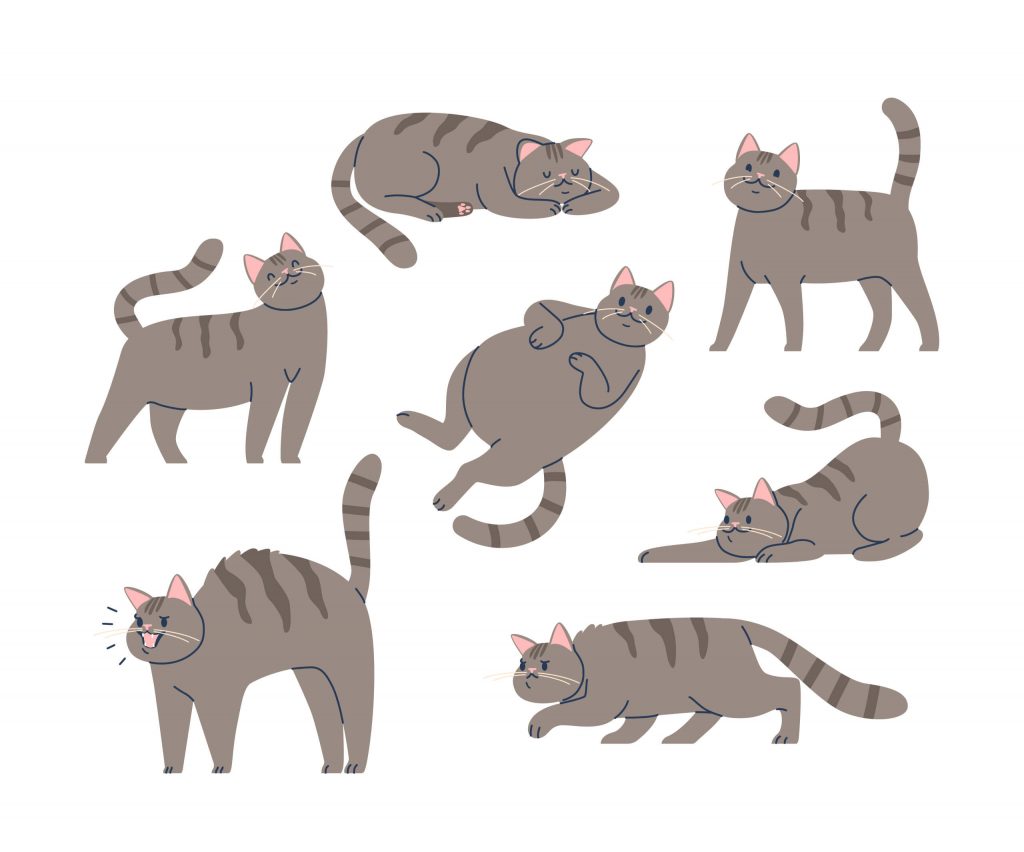
Not all cats react to valerian in the same way. In fact, their behaviour when they encounter this
medicinal plant can vary greatly depending on the cat. Valerian might fill them with joy or make them highly aggressive – or both. Like all plants, valerian can have a positive effect and actually benefit your cat, but it can also be dangerous. Indeed, although some cats are magically attracted to the scent of valerian, others might display immediate aggressive behaviour. In other words, when they come under the influence of valerian, some cats might suddenly appear as if the plant has sent them into a downright frenzy. So don’t let your cat out of your sight when it comes into contact with valerian for the first time. Observe your cat’s body language when it encounters valerian: how does it behave?
What effect does valerian have on cats?
Valerian can have a number of different effects on cats. Some cats might start rubbing their heads affectionately against anything containing valerian and then roll around euphorically or stagger to and fro as if they were drunk. Other cats might start zipping around the living area as if someone pressed a fast-forward button that makes them move at double speed. It might even look as if they’ve gone “valerian crazy”! But there are also cats that won’t be moved at all by the scent of valerian: very young and very old cats, for example, won’t be impressed with the herb. In the case of elderly cats, this is probably due to the fact that their sense of smell diminishes with age. Just like us humans, their previously sharp senses tend to become less sharp over time. Kittens won’t react to the scent if they’re not sexually mature yet, simply because they won’t be stimulated by the actinidine or by the valeric acid contained in valerian, the latter being reminiscent of the attractant used by cats in heat.
REMINDER:
Es ist möglich, dass DeineJust as some cats don’t react to catnip, your cat might not show any behavioural response to valerian at all.
Starting at what age can you use valerian in cats?
You’re welcome to use valerian in cats of all ages, but don’t forget that kittens and elderly cats will be entirely uninterested in any kind of valerian-scented potpourri. This is because older cats no longer smell as well as they did when they were young, which means they won’t pick up on the beguiling attractants contained in the herb. In other words, there’s no point in getting any valerian for cats of an advanced age. The earliest point at which you can try valerian on your cats is when they’ve become sexually mature. At that point, they will be receptive to the valerian stimuli.
.
NOTE:
Female cats reach sexual maturity at roughly 4 to 12 months depending on their breed, disposition and body weight. Male cats reach sexual maturity at roughly 8 to 10 months. When they do, you’ll probably notice that their urine smells stronger and that they try to mark their territory wherever they go.
Does valerian have an effect on humans?
Valerian has a different effect on humans than on cats. For us, the scent of this medicinal herb is anything but beguiling. Some cat lovers refer to those small valerian-scented pillows as “stinky cushions”, and for good reason. The physical effect of valerian on humans also differs from its effect on cats: while many felines go nuts for valerian and even shy cats lose all inhibition, the opposite is true for us humans. Instead of stimulating us, valerian tends to soothe our nerves and make us sleepy. Either way, there’s one thing is for sure: valerian is not for everyone!
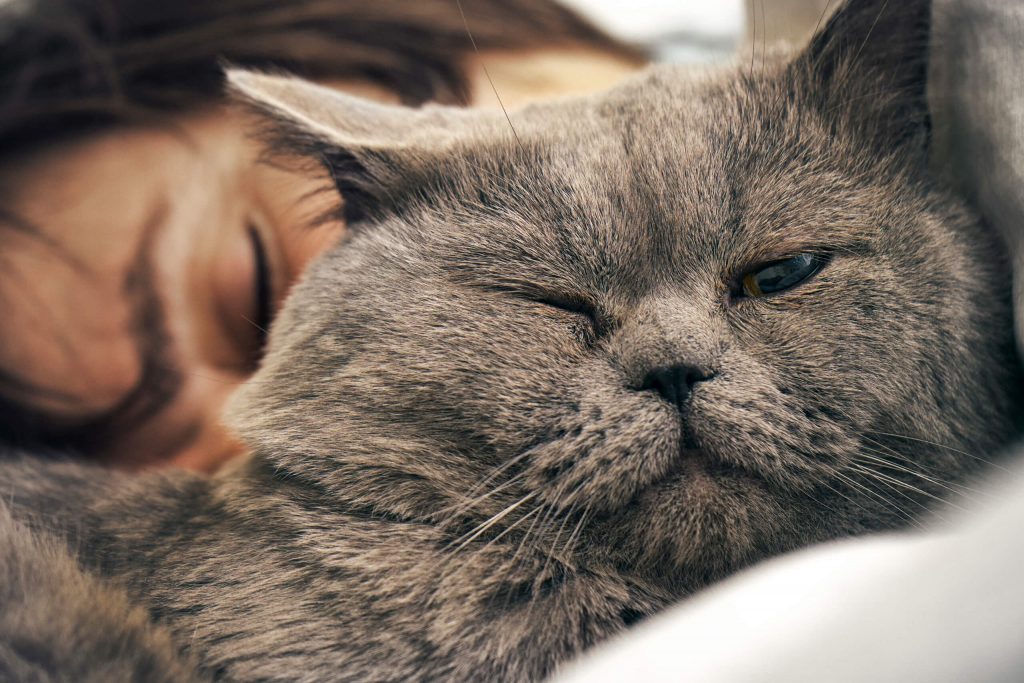
How to use valerian to benefit cats
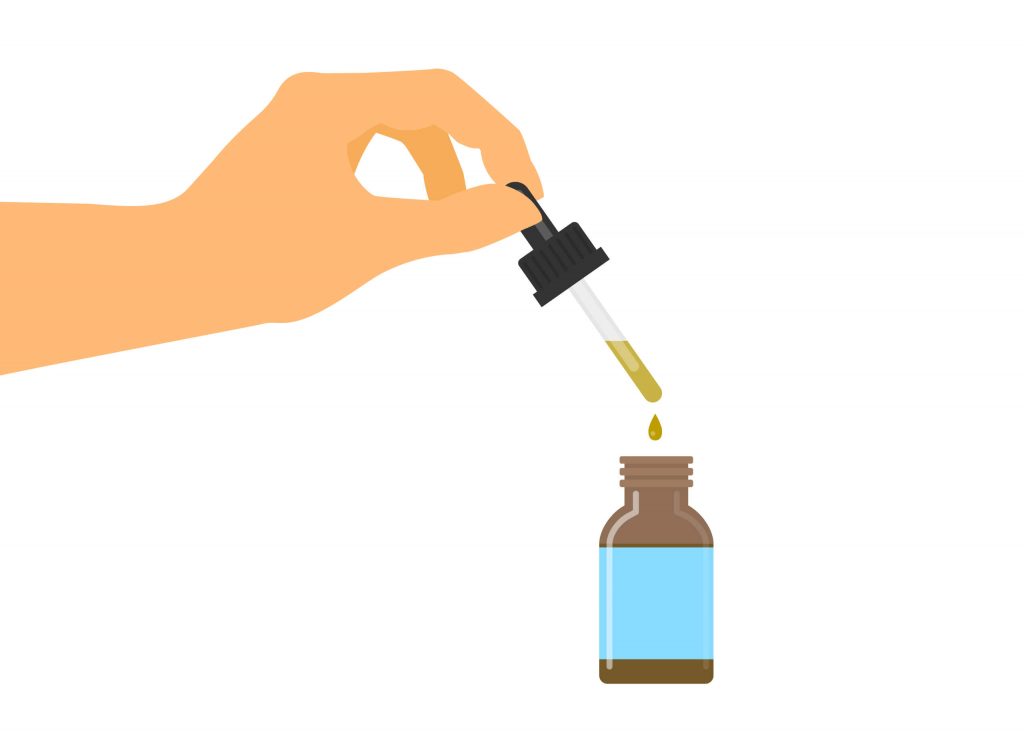
There are several ways to use valerian that will benefit cats. Depending on what you’re trying to achieve, you can use valerian in either dry or liquid form. For example, if you’re finding the valerian cat toys from the cat store too “standardised” and off-the-shelf, and if it’s
getting too expensive to keep buying new cat toys, you can make your own small valerian mouse bags from pieces of sturdy, clean fabric filled with leftover scraps of other pieces of fabric. Simply use a shoelace as a mouse
tail: tie it very tightly, otherwise it will come undone very quickly. And before you sew everything shut, just put a few pieces of dried valerian root inside. You can also create your own “scented” objects or pimp up your regular cat furniture by using valerian in liquid form: just a few drops or a couple of
pumps with the spray will do the trick
TIP:
When making your own DIY valerian cat toys, you should make sure to only use dried valerian
root¹ from pesticide-free, organic cultivation!
¹Source: BesteReviews.de (27 March 2024): “10 Best Valerian For Cats Dried In Germany”, online at Unsere 10 Besten Baldrian Für Katzen Getrocknet – März 2024 | BesteReviews.de, accessed on 27 March 2024 Unsere 10 Besten Baldrian Für Katzen Getrocknet – März 2024 | BesteReviews.de
Finding the right dosage of valerian
When it comes to finding the right dosage of valerian, you should always play it safe. The general rule when dosing valerian is: less is more! Don’t give your cat a full dose of valerian every day; instead, give it to them once or twice a week at most. Your furry friend shouldn’t be constantly exposed to
the scent of valerian, because that would be like being surrounded by a scent everywhere you go. You might find it great at first, but if you’re constantly exposed to it, it will quickly become too much for you. Think of it like a permanent “scent overload”! Either it wears you down or the scent becomes so
annoying that you’ll do everything you can to avoid it. In other words, only go on a “valerian trip” every now and then, because too much valerian can have unpleasant consequences:
- fatigue
- vomiting
- diarrhoea
- palpitations
- general malaise
Important tips when using valerian
You should follow a few basic rules when using valerian. The first thing you should never forget: even though valerian is considered harmless, it’s still a drug. What does that mean? The term “drug”
refers to substances that can alter the functioning of a living organism. In fact, drugs can influence both the psyche and physical functions of humans and animals. Although a “valerian high” in cats is usually only short-lived – the frenzy typically ends after ten to fifteen minutes – it still means they’ll be in a state of intoxication. For example, if you have a sick kitty at home, you should speak to your vet before bringing the patient into contact with valerian.
A few basic tips to keep in mind when using valerian in cats:
- always supervise your cat when they come into contact with valerian.
- use valerian on level ground rather than at any height.
- only offer your cat valerian once or twice a week.
- only buy valerian products made of high-quality organic ingredients.
- Make sure your cat doesn’t actually consume any pieces of the valerian root.
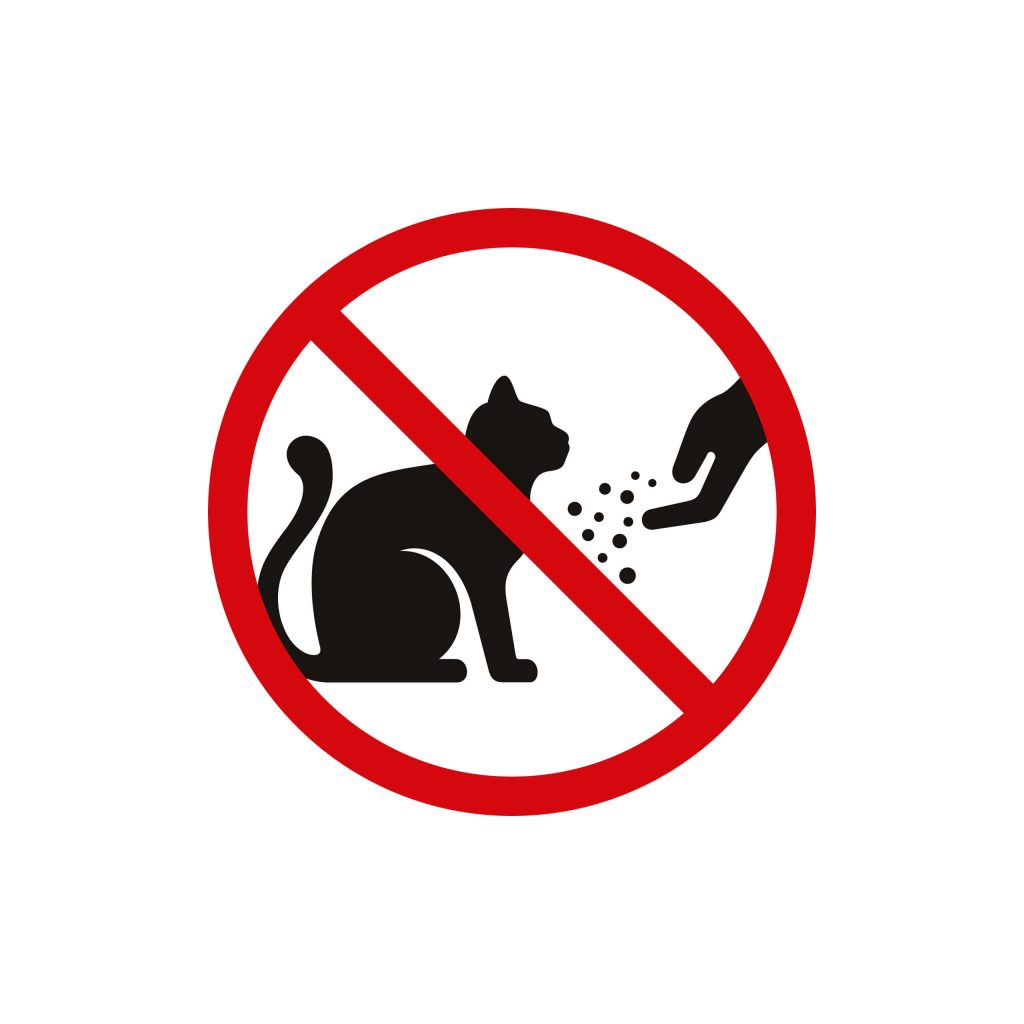
CAUTION:
Valerian products designed for humans should not be offered to cats!
The designated uses of valerian
Valerian is designed for a number of uses. Its scent is very attractive to felines, which means you can use it to make certain spaces and/or objects more “palatable” to cats. For example, you can use alerian to lure your cat into its transport carrier or make unfamiliar surroundings more interesting to your cat after moving into a new house. If your cat picks up on the beguiling scent of valerian, there’s a good chance they’ll get off your designer sofa and turn their attention to the scratching post, to which they are now magically attracted. Looking to experiment with new stimuli? Why not add some variety to your indoor cat’s living space by making use of a new fragrance.
Can cats become addicted to valerian?
Although valerian is also known as a “cat drug”, the herb is not addictive to cats. When administered in the proper dose for cats, valerian will not lead to habituation or addiction. When the initial high wears off, many cats are simply deeply relaxed. Still, it’s always possible that some cats will react more intensely to the herb. Also, if your cat is playing aggressively with a valerian toy and it starts to come apart, the danger to your cat will more likely come from the toy filling itself. Remember, your cat should never eat the filling; otherwise there’s a risk of intestinal obstruction!
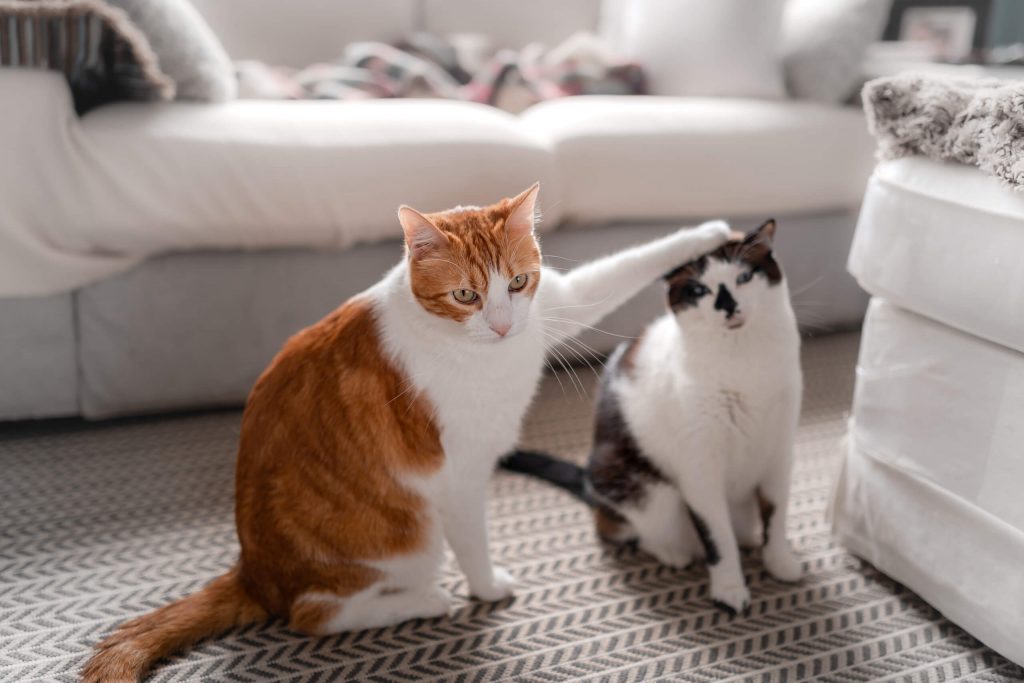
TIP:
If you share your home with several cats, you should make sure that each cat has its own valerian toy or valerian cushion. Otherwise your cats might get jealous and start to fight over the toys and cushions!
The advantages & disadvantages of valerian for cats
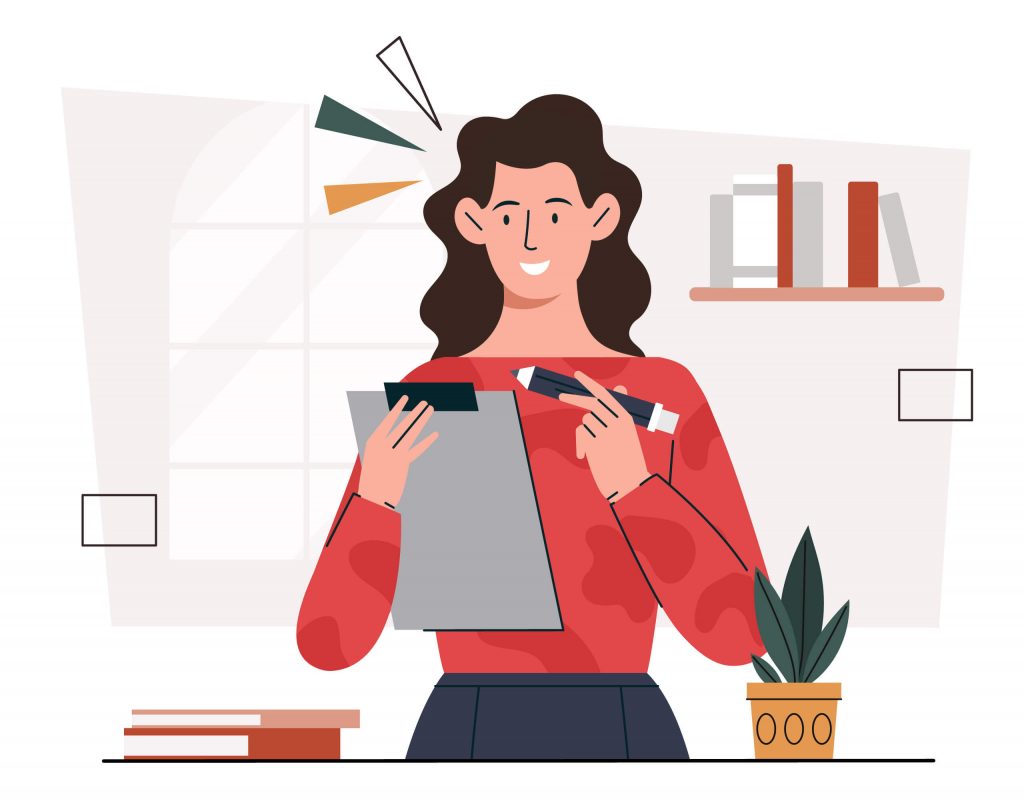
Like many things in life, there are two sides to valerian. The herb can do cats a lot of good, but it also has some downsides that are not so attractive. In other words, valerian has advantages and disadvantages for cats. The positive side is that valerian produces a purely plant-based effect, without any chemicals. Certified organic valerian does not normally contain any artificial additives that might lead to allergic reactions in cats. Compared to synthetic remedies, valerian is a natural remedy that will not harm your cat as long as you make sure it’s used carefully and in the correct dosage for felines.
What are the benefits of valerian for cats?
Valerian can have many benefits for cats. Valerian can help shy cats access their inner wildcat and become more outgoing. With the help of valerian, these furry friends might suddenly come out of hiding, sprawl around on the floor and even play fearlessly with other kitties. Valerian makes these kinds of cats more relaxed and reduces their inhibitions, at least for a short time. With valerian, bashful introverts become daring giants for a while.
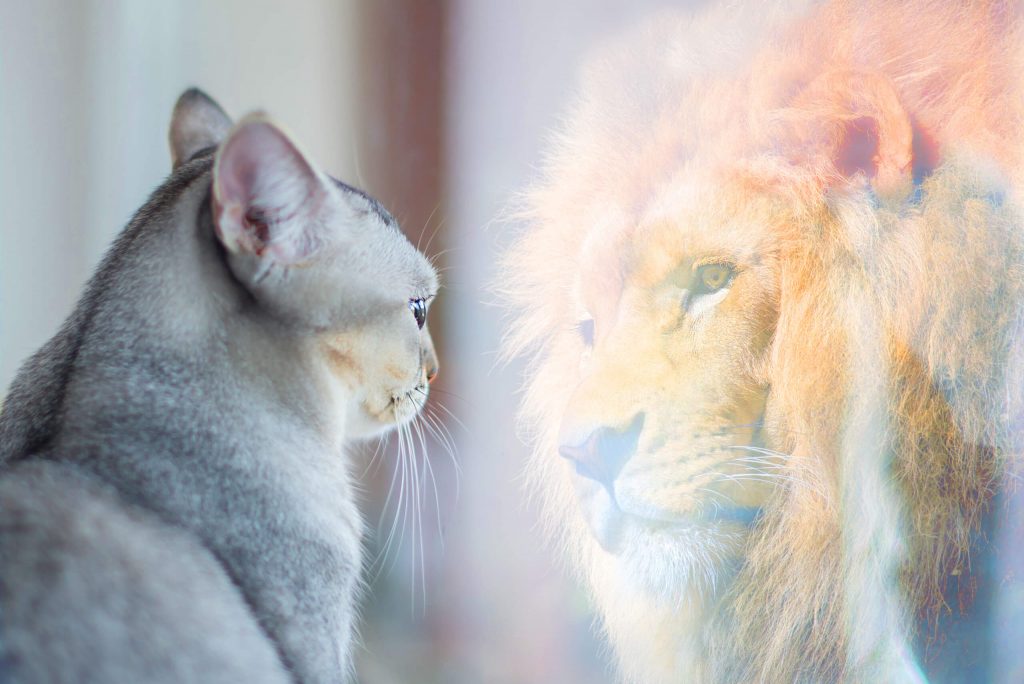
Valerian provides lots of playing fun
Valerian can encourage cats to become animated and engage in play. Just like catnip, valerian contains nepetalactone and actinidine, two substances that cats perceive through their sense of smell. Certain receptors in the cat’s nose react to these substances and trigger a feeling of feline ecstasy. A toy with a touch of valerian will make playing even more fun than usual.
Using valerian to soothe agitated cats?
Valerian can help soothe agitated cats in stressful situations. But don’t forget, valerian’s effect can vary greatly depending on the cat. Some cats might calm down quickly after encountering valerian, but other might take longer to feel the effects. Some cats will be absolutely pumped, whereas other
won’t show any reaction at all.
REMINDER:
Whether valerian is able to soothe a cat and calm its agitated nerves depends on how excited the cat is, how it usually reacts to the herb and the size of the dose.
Does valerian help against anxiety?
Valerian can help reduce anxiety. Anxious cats will be able to relax more with the aid of valerian, because the herb can have a calming influence on their nervous system. Their nervousness will decrease and they’ll feel less stressed and more secure. However, there are limits to what valerian can do. Beyond this calming effect, valerian unfortunately can’t help against anxiety:
- Severe anxiety disorders: If the cat is extremely frightened, even valerian won’t help. If that’s the case, you should get help from a vet or cat psychologist.
- Health problems: If your furry friend is suffering from health problems, valerian can help it relax for a short time, but it will not be able to help it recover.
- Inadequate dosage: In order for valerian to provide relief from anxiety, it must be dosed sufficiently. Always follow the recommendations provided by the manufacturer or your vet.
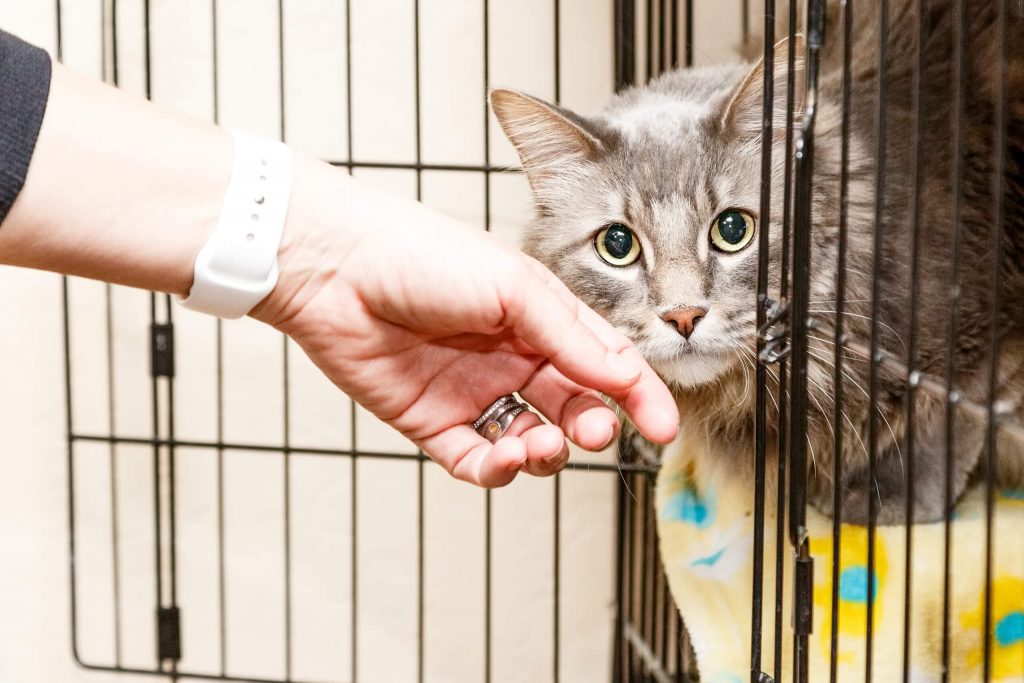
What are the disadvantages of valerian for cats?
Valerian can make cats feel great, but it also has some potential disadvantages. One disadvantage is that there’s no guarantee valerian will be effective in the first place. Remember that not all cats react
to valerian in the same way – not even if they’re given the herb in exact the same dose. Many cats react positively to valerian, but others sometimes show no reaction at all. Some will behave very aggressively, which means that tensions and even fights are inevitable if you’re living in a multi-cat household. If you notice that one of your cats transforms from a cuddly tiger into a belligerent
aggressor, you should avoid valerian so as not to endanger your other cats.
TIP:
If you haven’t had any positive experiences with valerian, there are other things you can use to try and calm your cat, including Bach flowers, lemon balm, rosemary and cat pheromones.
Valerian has a strong odour for humans
Most people will consider valerian to have a strong and pungent odour, and many people will find it highly unpleasant. The plant produces this odour with the help of nepetalactone, actinidine and its essential oils. Although cats find this herbal perfume extremely attractive and appealing, we humans are more likely to stay as far away as possible from any of those “stinky” toys filled with valerian.

Can ingesting valerian give your cat stomach problems?
Cats should only ever sniff valerian, never actually eat it! If your cat manages to ingest a small amount of valerian, there’s no need to panic, but you should keep a close eye on them for a while afterwards. They might get away with just an upset stomach and intestinal troubles. However, if they have diarrhoea and vomiting and it doesn’t subside, you should contact your vet.
What are the different ways to give valerian to cats?

Valerian can be given to cats in various forms
and doses. Depending on the reason
you want to use the herb for your cat, you can administer valerian in the form
of dried roots, as a play toy, as drops or as a spray. Before giving valerian to
your cat, however, you should be clear about what exactly you want to achieve:
Do you simply want to give your furry friend a mood booster? Do you want your cat
to be more active? Do you want to encourage your cat to let off steam? Or are
you looking to soothe your cat and help them feel more relaxed in a stressful
situation?
Valerian toy cushions for cats
Outdoor cats can follow all of their primal instincts – lurking, catching prey, climbing and jumping. Not only does this challenge their senses and sharpen their abilities, it also increases their physical fitness. Cats expend a lot of energy pursuing these activities, plus they train their bodies in the process. But what about indoor cats? How can you make sure an indoor cat stays healthy and fit? Valerian play toys can help cats expend energy and relieve tension. In fact, there is a whole range of valerian cat products to choose from, including scented toys and cushions filled with valerian or parts of dried valerian root.
Here’s how to use valerian cushions for cats:
1. Offer your cat the valerian cushion a maximum of 2 times a week, and always observe their reaction.
2. After that, store the dry valerian cushion in a jar with a screw cap.
3. Keep the cushion away from other items belonging to your cat so that the items retain their own allure.
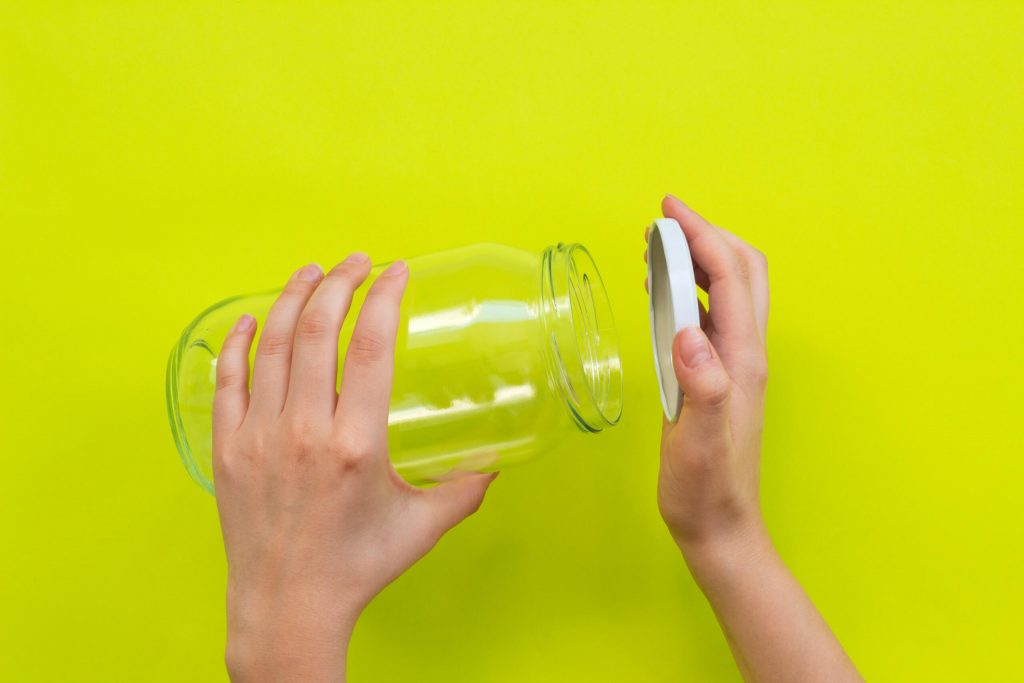
Valerian drops
Valerian for cats is also available in the form of drops. Even if you can preserve the valerian scent in a jar for a while, it won’t last forever and will eventually evaporate. When that happens, you can provide a fresh scent with a drop of liquid valerian. Did you buy your kitty a cat cave and they’ve
completely ignored it since you brought it home? A few drops of valerian will turn that cave into a fragrant feline hideaway! However, make sure that you don’t put the valerian drops directly on the
furniture or scatter the pieces in one place. Instead, lightly sprinkle a scented cushion or toy and place the “object of desire” wherever you’d like the cat to follow.
Valerian spray
Liquid valerian comes in the form of drops, but also in the form of a spray. Is it a good idea to spray
new cat furniture with valerian? Actually, no, it’s better not to, plus you should exercise caution in this regard. Not all cats like the smell of valerian, and once the scent has been absorbed, it will remain on the wood or sisal for a long time. Some cats are very sensitive to odours, and these cats will get annoyed very quickly if there’s too much scent on your wonderful new cat furniture. They’ll end up ignoring it completely. In other words, if you want to use a scent, it should be subtle. Use only a little bit of spray very sparingly on a cloth or small cushion and put it wherever you’d like your furry
friend to find it …
TIP:
The best way to give your new cat furniture a personalised cat scent is to simply run a cloth gently over the cat’s head, flanks and anal area and then wipe the furniture with the cloth.
This way, the new cat furniture will immediately smell familiar to your cat!
Valerian herb mixture
With the help of a valerian herb mixture, you can make your own cat toys or refill them when the scent of the toy has worn off. A teaspoon of dried valerian root is enough to revitalise any toy and provide new playtime fun! If you want to make a valerian-scented sock, just get a clean children’s
sock and fill it with sheep’s wool, rice or spelt husk. The filling material shouldn’t be too heavy, otherwise your cat won’t be able to grab it properly. Just add some valerian herb mixture to the filling, knot it or sew it up, and you’re off!
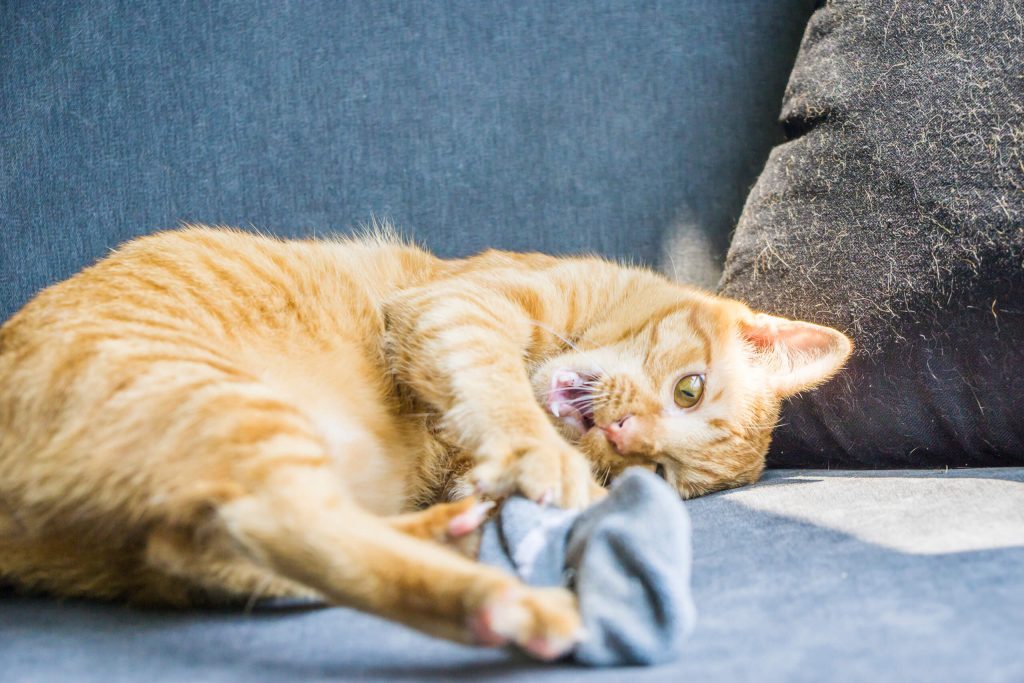
Valerian or catnip? Which to use when?

You can use catnip or valerian to calm your cat, to get them used to something new or to train them to do something they otherwise won’t do. You can also use both herbs to make certain places or objects more “palatable” to your cat. For example, you might use it to lure your cat into their transport carrier when you go on holiday or to remove any fear your cat might have of unfamiliar surroundings. Some cats prefer valerian, while others prefer catnip.
FAQs – Valerian for cats
Valerian is not dangerous for healthy cats. If your cat is playing with a valerian toy and it starts to come apart, the danger to the cat is more likely to come from whatever the filling is made
of. Your cat should never eat the filling; otherwise there’s a risk of intestinal obstruction!
Valerian can have a number of different effects on cats. Some cats rub their heads affectionately on anything containing valerian. Some roll around euphorically or stagger to and fro as if drunk.
Other cats will start zipping around the living room at double speed.
Valerian can be given to cats of all ages. However, kittens and older cats won’t be as interested in the valerian as much as regular adult cats: the kittens because they’re not yet sexually mature
and the elderly cats because their senses are no longer as sharp as they used to be.
Valerian can be used for a number of different purposes. You can use it to make certain places or objects more “palatable” to your cat. For example, to get them to go into the transport carrier or to make them less shy in unfamiliar surroundings.
Valerian can have many benefits for cats. Valerian can help shy cats become more outgoing and dare to do things they would otherwise be scared of. Valerian makes cats more relaxed and reduces inhibitions: bashful introverts then become daring giants, if only for a while..
Valerian can be good for cats, but it also has disadvantages. One disadvantage is that there’s no guarantee valerian will be effective in the first place. Not all cats react to valerian in the same way – not even if they’re given the herb at the same time and in the exact same dose.
Cats should only ever sniff valerian, never actually eat it! If your cat somehow manages to ingest a small amount of valerian in the heat of the moment, there’s no need to panic. You should, however, keep a close eye on your cat for a period of time afterwards.
Although valerian is also known as the “cat drug”, it’s not dangerous for cats. If administered in the right dose, valerian will not lead to habituation or addiction. Once the high has worn off, your cat will likely just be deeply relaxed.
